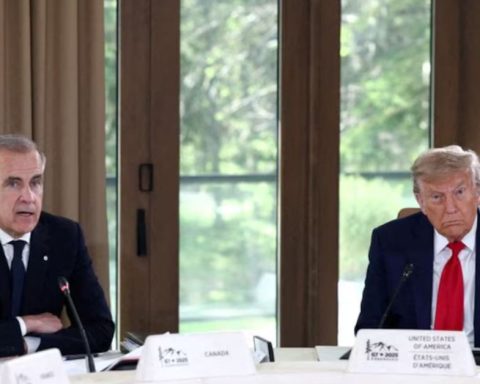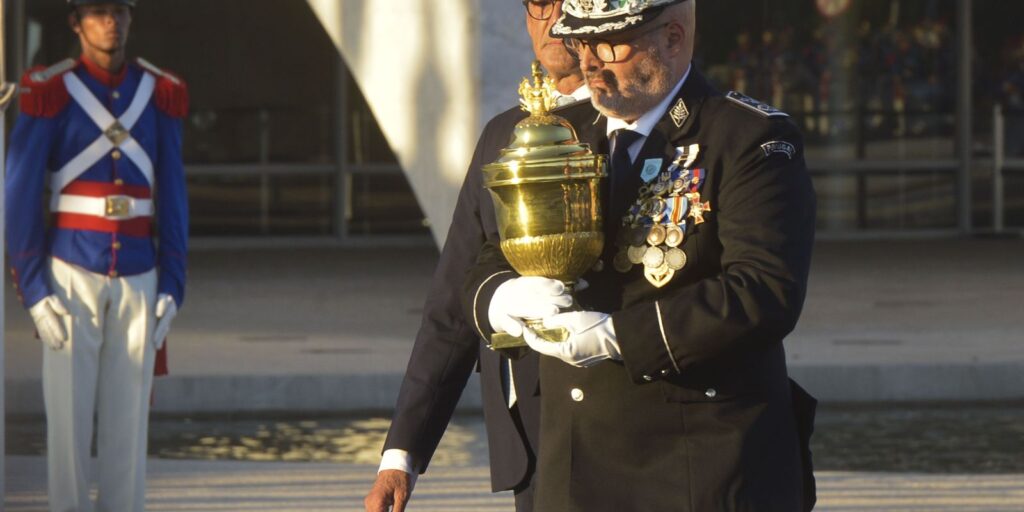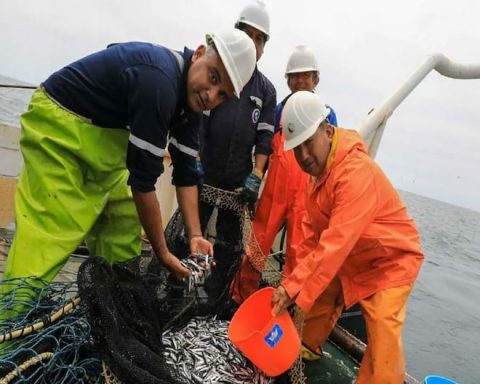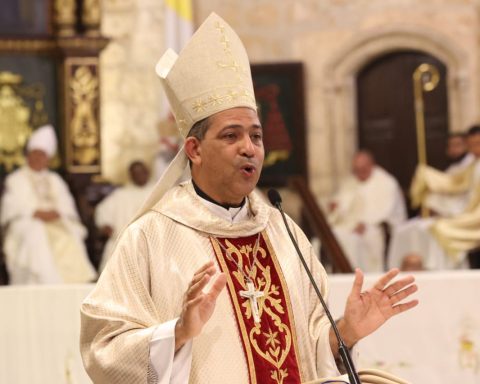August 28, 2022, 1:24 PM
August 28, 2022, 1:24 PM
The news hit us on August 7th. Ernesto Cavour died at the age of 82 in La Paz. Obituary notes and tributes published in the press remembered him as “the genius of the charango” and “the best charango player in the world.” Both qualifiers did not exaggerate.
The memory emerges with all the clarity that the traps of memory allow over the years. It must have been in 1976, back in Andean Quito at the center of the world, when my friend Francisco Pareja told me that Ernesto Cavour, unknown to me until then, would perform at the Casa de la Cultura. “He’s the greatest charango performer, he even has a complete version of The Four Seasons,” he told me.
I arrived at the small Benjamín Carrión amphitheater. It was an unforgettable concert, where the richness of his musical virtuosity was mixed with the empathy that conquered a mostly young audience who, sold out of seats, made him stand on the stage sitting on the floor.
“Oh, how scary, so many recorders, this looks like the CIA. My quinquirchito’s hair stands up from fright », she left, saying between laughs. Indeed, he was greeted by numerous battery-powered tape recorders, where we recorded his presentation on our cassettes.
The quirquincho is the Andean armadillo that inhabits parts of Bolivia and Peru, and also north of Argentina and Chile. With him, the charango was born in Potosí in the 17th century, when the richest city in South America had some 160,000 inhabitants, more than Paris, Rome or Madrid. It was the indigenous miners exploited in the extraction of silver, who replicated the guitars and vihuelas from the Old World using the shell of this little animal.
«One time a quirquincho/ due to anxious waiting/ fell asleep soundly:/ it was his imilla’s fault/ Great was his surprise/ when he woke up crying/ in the box of a charango/ with an empty belly». This is how Ernesto Cavour began his concert, with these verses by the singing Charanguito that refer to the origins of the instrument, in a personification of the armadillo and its female, whom he names imilla, alluding to the Aymara word that defines a young indigenous.
A poetic and humorous story, enlivened as a background curtain with the strumming of multiple strings, which accompanied other verses: «Charango…!/ you came into the world/ when the shadows of evil/ still did not cover our land/ When you sang to the earth/ with the purest longing/ when the sun was sung/ to agrarian life/ when the moon kept watch/ the song of the true…/ When the musical mission/ was to honor the gods, / cruel and ruthless/ of the natural forces…”. A poem that traces the history of this quirquincho that grew musically from the mountains to become urbanized in markets, bars, canteens, chicherías and carnivals.
The poem Al charango ended with a perhaps painful irony: «Now, before the short time / of your long toil / you want to return to your world / cute charanguito singer… / But the countryman continues his journey / through these desolate lands / with the thinking donkey / and a little transistor radio / next to his heart».
Later, he adopted that tone between serious and picaresque of the Andean man: «I have lost my voice. I used to have a nice, round voice, like Gardel’s. I’ve lost it and I had to find a voice for myself, a canteen singer». It was the introduction of his theme Crooked Tree, which he started laughing from the beginning: «Crooked tree, crooked tree, how sensitive you have formed, / bend down to give shade / instead of reaching up to the sky». And further on: «Your trunk has bent / a thousand hearts engraved / of adulteries that endure / and desperate loves».
They were divertimentos, which alternated with his instrumental themes, in a virtuosity of a performer who clarified his self-taught condition: «I don’t know musical theory, I have never studied it nor have I understood it. I cannot understand how one white is worth two blacks, when rather one black is equal to two whites…”.
Instrumental themes dedicated “to the prettiest female in America: the llama” and to the “most macho male: the donkey”. Pieces that are already part of the anthology of the charango, such as The flight of the hummingbird, which took us musically to the evolutions of that beautiful bird. Stories narrated with his strings, in the style of The Horse, the Kick and the Dog, where his charango imitates the heavy trot of the horse, the hysterical barking of the little dog, and the kick with which the horse silences him and throws him around. down the dusty town street. It was like watching the soundtrack of a movie through the quirquincho.
After his presentation, he gladly agreed to be interviewed for Nueva magazine. It was a long conversation, where I was able to soak up the knowledge and at the same time the simplicity of this Bolivian master, a philosopher in his own way, who without any false modesty described his version of The Four Seasons and other themes of the universal classical repertoire as a game.
His world was the Andean. He even carried with some annoyance the surname Cavour, Frenchized by his grandfather who changed the spelling of Cabur, his original patronymic. Thus, for a long time he acted under pseudonyms and even gave priority to Aramayo, his maternal surname. His biography records that at the age of ten he collected coin by coin to buy his first charango, and that after starting his career as a soloist he created in 1966 the successful group Los Jairas, integrated, among others, by the Swiss Gilbert Favre, quenista
Favre was returning from Chile, where they called him “the foreign dresser.” It was the impossible and tragic love of Violeta Parra, who dedicated her song Run Run to the North, accompanied by a charango, an instrument also from the musical score of Gracias a la vida.
A successful tour of Europe crowned the existence of Los Jairas in 1971. Cavour separated from the group that year upon returning to Bolivia, to give flight to a career with new ensembles and at the same time establish himself as a soloist, although he usually shared stages and recordings with others. Andean artists and groups. Meanwhile, he continued to enrich his work as a historian, researcher, compiler and even luthier of the charango, which over the years definitively ceased to be manufactured with the shell of the quirquincho, due to the risk of extermination of this unique American mammal.
In June 2019, he said in an interview that he had invented about thirty instruments, of which five had been internationally recognized or patented. Among them are included, in addition to innovations of the charango, several models of panpipes. A photograph is preserved where he appears playing a kind of flute that is at the same time a tiny charango. All these creations, as well as his musical experimentations that incorporated themes with mandolins, concertinas, guitars and wind instruments, must be in the Museum of Musical Instruments, born as the Charango Museum, which Cavour created in La Paz in 1962 and which today has with about two thousand pieces.
Above all, he was a world ambassador of the charango and Andean music. It would take too long to list here all the distinctions awarded by governments, international organizations, cultural corporations and cities. On two occasions he was invited by UNESCO to Paris. «I toured all of Europe, three times in France, I was in the Soviet Union. I traveled through the United States and throughout America, to Tierra del Fuego. I had performances in Japan with my own group, we gave 60 concerts », he recalled in that 2019 interview with the Los Tiempos newspaper.
“Very saddened by the death of our brother Ernesto Cavour Aramayo, great master of the charango and tireless promoter of Bolivian culture,” former president Evo Morales wrote on August 7. Another former Bolivian president, Carlos Mesa, said that “he and the charango were a single entity (…) My most paid tribute to his departure.”
«Today is a very sad day for the music of our continent due to your departure, dear teacher, brother and friend Ernesto Cavour. (…) With us remain the virtuous sounds of your charango and that enormous dimension of your compositions which traveled the world delighting millions from your beloved Bolivia. Thank you for so much, dear Ernesto!” the Illapu group wrote from Chile.
Browsers on YouTube, Spotify and other music storage and distribution platforms will now have one more good reason to track down and enjoy the legacy of this great charanguista. For now, he must be dismissed as exceptional artists are dismissed: with a standing ovation.
Author: Gustavo Gonzáles Rodríguez is a Chilean journalist and writer.


















